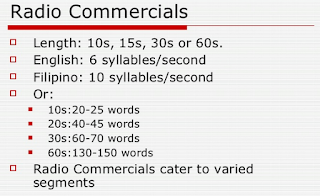In its submissions to the OFT in relation to recent radio mergers, Ofcom has defined separate relevant product markets for direct and indirect radio advertising. Ofcom’s discussions with stakeholders in the past have indicated that the types of advertising bought under each of these two routes to market have separate and distinct product characteristics and different costs, and that switching between both routes would be costly.
The characteristics of indirect and direct advertising include:
Direct Advertisers
a) Typically buy a more sophisticated product.
b) Buy radio advertising as part of nationwide cross-media campaigns which typically cover many stations, with radio in some cases being used to complement the messages delivered by other media.
c) Buy airtime through media buying agencies and radio group advertising sales houses; agencies and national sales houses provide a cost-effective way of purchasing across numerous stations, providing a number of value added services to indirect advertisers; the extensive use of annual contracts gives a degree of buying power to the indirect advertisers/media buying agencies relative to radio advertising sales houses/radio stations.
d) The prices they pay are typically based on commercial impacts delivered, i.e. a
CPT basis.
Indirect Advertises
e) Do not normally run sophisticated cross-media campaigns, therefore using agencies is unlikely to be cost-effective for direct advertisers; agencies are typically not interested in providing services to such local advertisers either as it is not cost-effective.
f) Typically target a relatively small geographic area using one or a small number of stations only.
g) Buy spots of airtime rather than commercial impacts; and do not generally make use of annual contracts with radio stations.







No comments:
Post a Comment